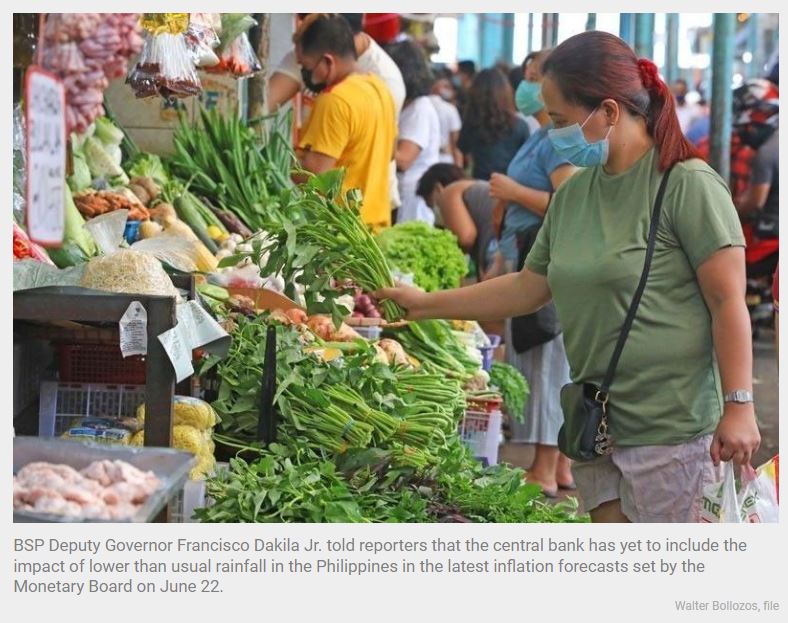Philippines – BSP: El Niño impact on inflation minimal
MANILA, Philippines — The return of El Niño would have minimal impact on the prices of goods and services, according to the Bangko Sentral ng Pilipinas.
BSP Deputy Governor Francisco Dakila Jr. told reporters that the central bank has yet to include the impact of lower than usual rainfall in the Philippines in the latest inflation forecasts set by the Monetary Board on June 22.
“We have not yet included El Niño in our baseline (forecasts),” he said.
For El Niño, the BSP official said the impact is relatively moderate at about 13 basis points.
The weather condition brings lower than usual rainfall, or even drought, which threatens the output of agricultural crops and other produce
The National Oceanic and Atmospheric Administration (NOAA) in the US issued an El Niño advisory on June 10, announcing the arrival of the climatic phenomenon.
The Philippine Atmospheric, Geophysical and Astronomical Services Administration (PAGASA), had earlier forecast that there would be an 80 percent probability that the El Niño phenomenon would emerge from June to August, and that it will persist until the first quarter of next year.
PAGASA’s latest forecast showed a 53 percent chance that El Niño would reach a strong level toward the latter part of the year.
The BSP slashed its inflation forecast for this year to 5.4 percent from 5.5 percent, but slightly raised next year’s projection to 2.9 percent from 2.8 percent. For 2025, the BSP sees inflation averaging 3.2 percent.
Dakila said the BSP has factored in wage adjustments at the historical levels of about 4.2 percent.
“If the actual adjustment in minimum wages is higher than that, then that could also feed into inflation,” he said.
According to Dakila, the threshold for oil prices is high at $100 per barrel.
“So we have comfort that oil price shocks alone would not be enough for us to breach the inflation target,” he said.
Inflation averaged 7.5 percent in the first five months, still above the BSP’s two to four percent target range, despite easing to a 12-month low of 6.1 percent in May from 6.6 percent in April and a 14-year high of 8.7 percent in January.
Because of high inflation, together with the peso slumping to an all-time low of 59 to $1 in October last year, the BSP has decided to aggressively raise key policy rates by a cumulative 425 basis points since it started its interest rate liftoff in May last year.
As inflation cooled and the peso stabilized, the central bank extended its prudent pause by keeping the benchmark interest rate steady at a 16-year high of 6.25 percent in two straight rate-setting meetings in May and June.
Outgoing BSP Governor Felipe Medalla is confident that inflation would ease back within the target either by October or November.
He added that inflation could fall below two percent by January due to high base as well as the absence of new shocks.
Medalla said the BSP Monetary Board could start considering reversing the high interest rate environment by cutting interest rates if inflation falls below three percent for two consecutive months early next year.
Source: https://www.philstar.com/business/2023/06/29/2277270/bsp-el-nio-impact-inflation-minimal-


 English
English




